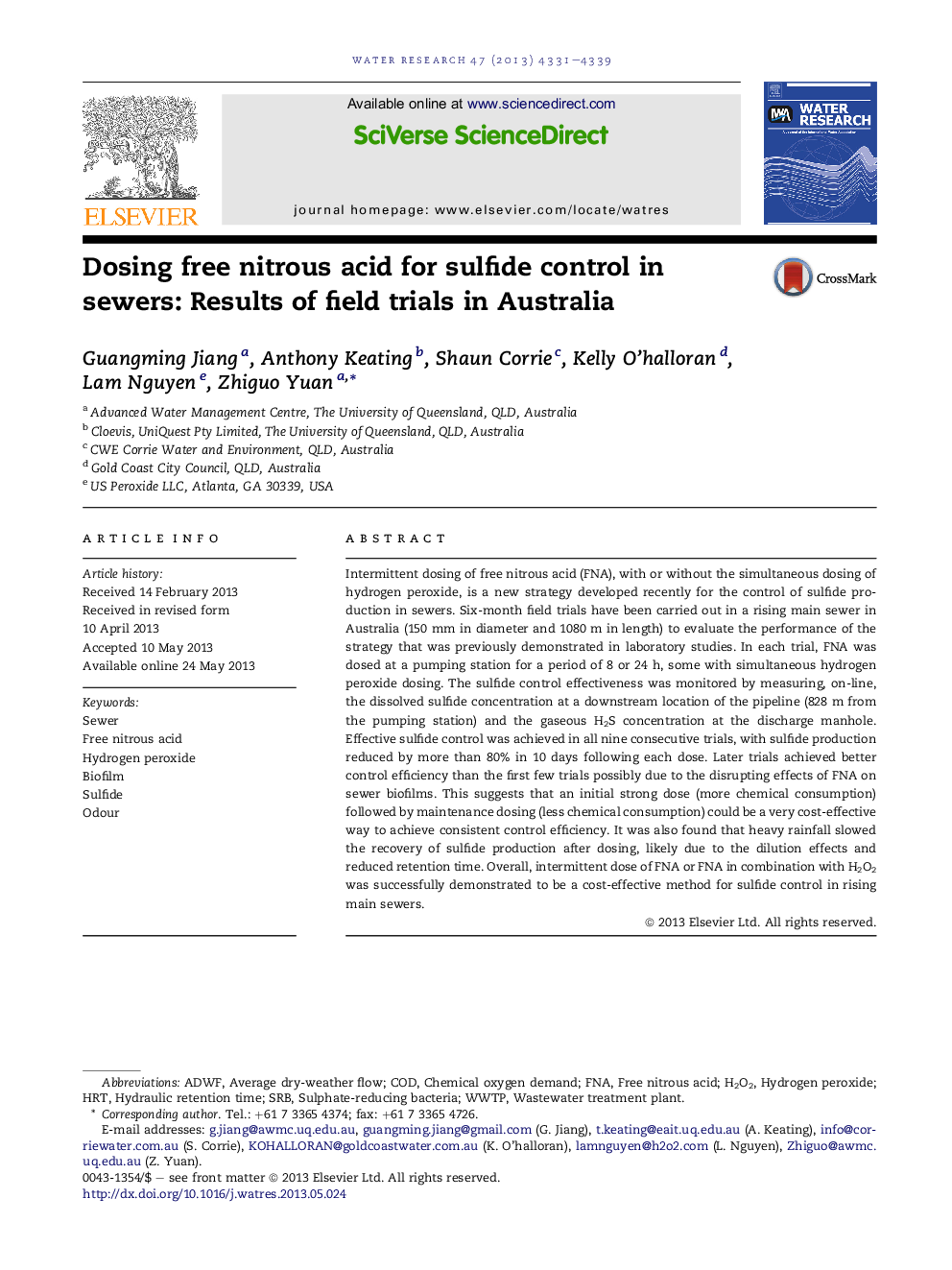| کد مقاله | کد نشریه | سال انتشار | مقاله انگلیسی | نسخه تمام متن |
|---|---|---|---|---|
| 4481982 | 1316845 | 2013 | 9 صفحه PDF | دانلود رایگان |

• The first ever field trial of free nitrous acid dosing in real sewers.
• Both free nitrous acid and its combination with hydrogen peroxide were effective.
• Sulfide was controlled by 80% in 10 days by one 8-hour dosing.
• No biofilm adaptation to FNA or the combination of FNA with H2O2 was observed.
• Heavy rainfall retarded the recovery of sulfide production after dosing events.
Intermittent dosing of free nitrous acid (FNA), with or without the simultaneous dosing of hydrogen peroxide, is a new strategy developed recently for the control of sulfide production in sewers. Six-month field trials have been carried out in a rising main sewer in Australia (150 mm in diameter and 1080 m in length) to evaluate the performance of the strategy that was previously demonstrated in laboratory studies. In each trial, FNA was dosed at a pumping station for a period of 8 or 24 h, some with simultaneous hydrogen peroxide dosing. The sulfide control effectiveness was monitored by measuring, on-line, the dissolved sulfide concentration at a downstream location of the pipeline (828 m from the pumping station) and the gaseous H2S concentration at the discharge manhole. Effective sulfide control was achieved in all nine consecutive trials, with sulfide production reduced by more than 80% in 10 days following each dose. Later trials achieved better control efficiency than the first few trials possibly due to the disrupting effects of FNA on sewer biofilms. This suggests that an initial strong dose (more chemical consumption) followed by maintenance dosing (less chemical consumption) could be a very cost-effective way to achieve consistent control efficiency. It was also found that heavy rainfall slowed the recovery of sulfide production after dosing, likely due to the dilution effects and reduced retention time. Overall, intermittent dose of FNA or FNA in combination with H2O2 was successfully demonstrated to be a cost-effective method for sulfide control in rising main sewers.
Figure optionsDownload high-quality image (277 K)Download as PowerPoint slide
Journal: Water Research - Volume 47, Issue 13, 1 September 2013, Pages 4331–4339